One Hundred Snail Shells
Oreohelix sp.
Oreohelix land snails are endemic to the western United States and particularly the Rocky Mountains, Great Basin and Southwest. There are seven species known to occur in Utah: Oreohelix eurekensis, O. haydeni, O. parawanensis, O. peripherica, O. strigosa, O. subrudis, and O. Yavapai (Pilsbry 1939).
I believe most of the shells above belong to Oreohelix peripherica (Deseret Mountainsnail) and specifically the recognized sub-species Oreohelix peripherica wasatchensis (named after the Wasatch Mountain Range where we have found all of these specimens while poking around the Wasatch Front).

These snails have obviously been racing around the region for a long time - here is a fossilized representative we found (below left) displayed next to its modern day cousin!
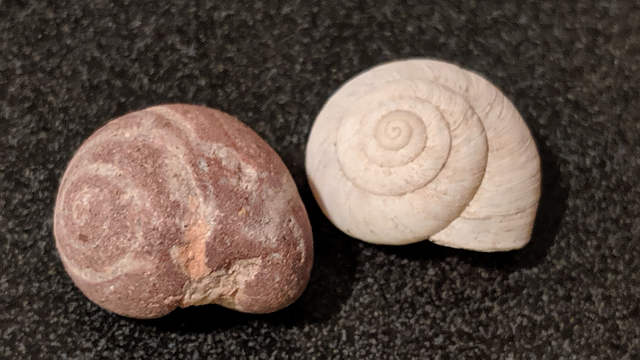
We collect the intact shells when we find them and have been using them for craft projects. The Things love painting and coloring on them :) After a long soak to get the dirt out and a little bit of bleach water to lift the stains, these shells make a great canvas.
Utah Snail References
Pilsbry, H. A., 1939. Land Mollusca of North America (North of Mexico). Monograph No 3 of the Academy of Natural Sciences of Philadelphia, Vol. 1, Part 1. Philadelphia, 377 and 573
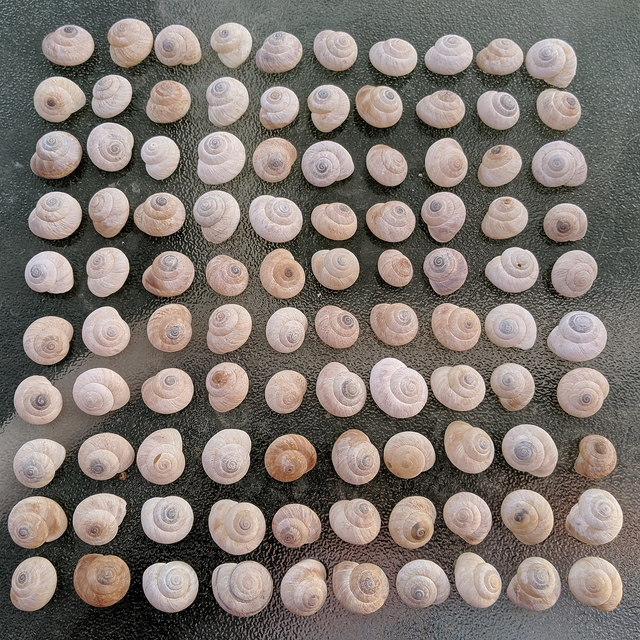

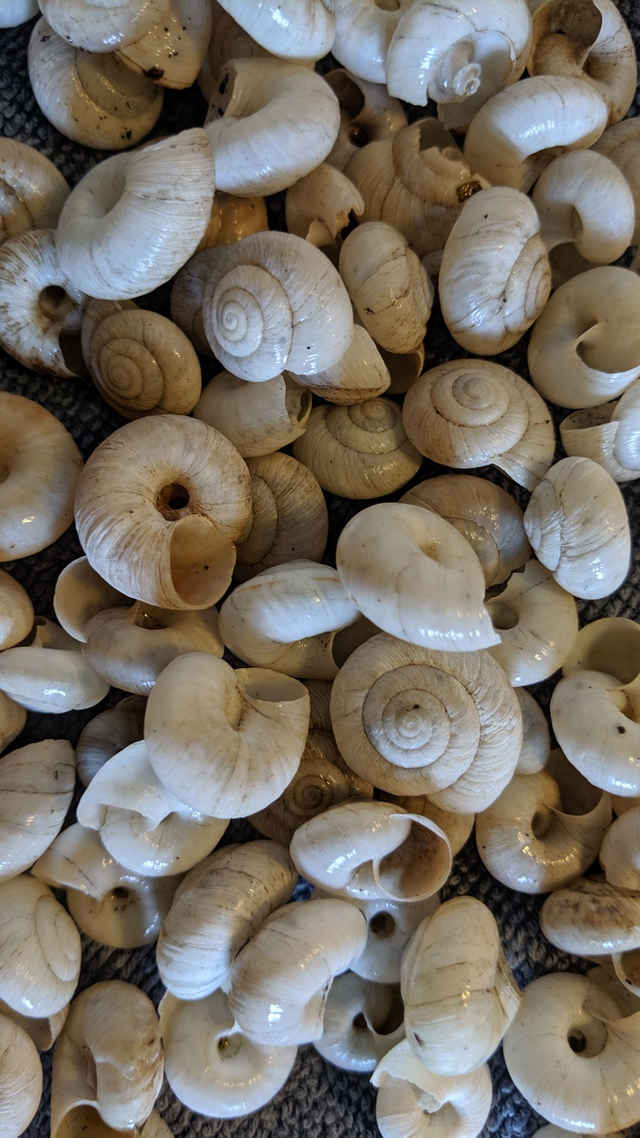
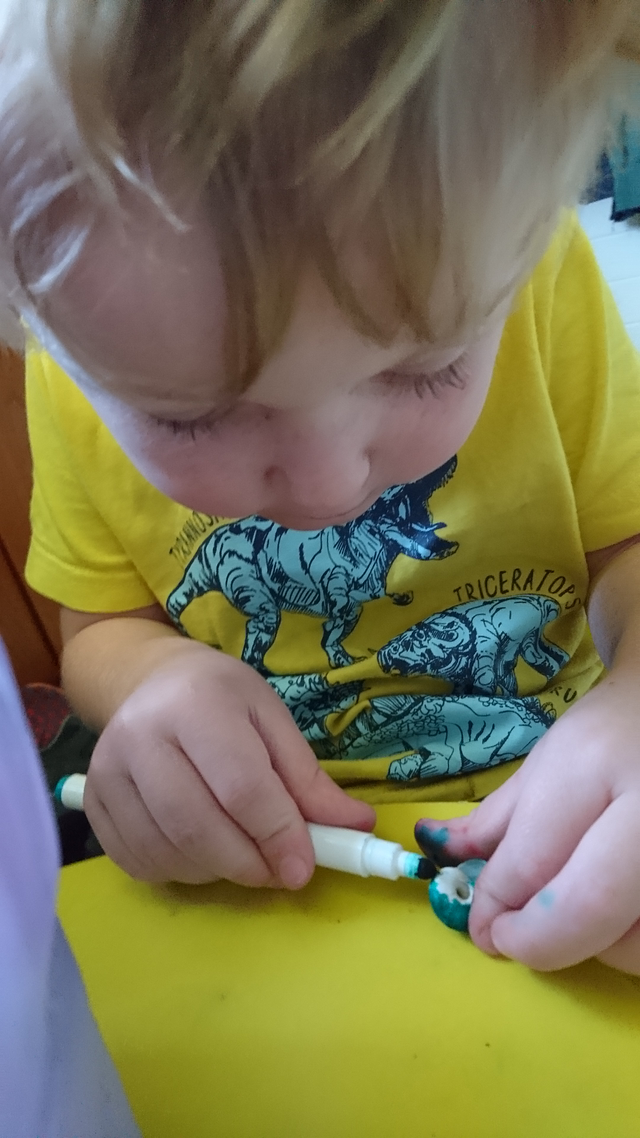
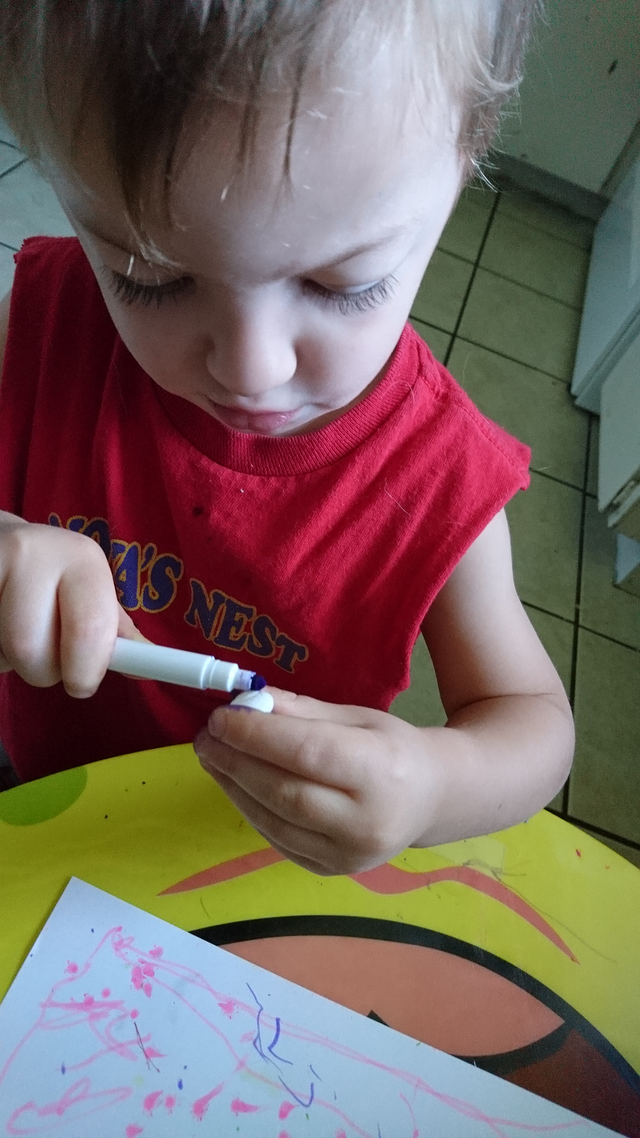

thats some collection, and curious as i wouldnt have expected them inland but perhaps a remnant of the great salt lake? the fossilized pic is fascinating.
Land snails are pretty common world wide, their distribution doesn't really depend on there being fresh or salt water nearby. The shell and the mucous they secrete help them conserve their moisture - because of this they can live even in deserts where you wouldn't expect to see slugs (which are basically snails without shells). One interesting thing is in some desert areas they actually estevate - estevation is basically the same thing as hibernation, but the period of dormant inactivity happens during the summer instead of winter. You should have very similar snails on the mountainsides and forests in Colorado, a generic name for this type of snail is "Rocky Mountainsnail". The land snails we had in Oregon were larger and a dark reddish brown.
ima have to make an effort to look more. ive seen crawdaddies and regular snails (slugs?) without the shell but not that many shelled guys. maybe im just not looking in the right place, or just not noticing them because they are so common (blend in with the typical fauna). tx for the shout-out to these everyday alien creatures..
If you ever find yourself in an area that was burned in a wildfire recently enough that the normal vegetation growth hasn't covered the burned ground completely, look for snail shells. They basically get cooked alive by forest fires and where we have picked up the most intact shells is in burn zones.
interesting. maybe why i havent seen them i tend to avoid the burnt areas because it makes me sad. will do ty
Burn zones are pretty cool, and totally a part of (healthy) nature. Burn zones are paradise for wildflowers and birds. A lot of the big wildfire problems that we have today are because of a century of total wilderness mismanagement focused on preventing fires and putting them out as quickly as possible... which is actually a terrible idea. Regular wildfires are a totally normal thing, they help quite a lot with diversity of flaura and fauna by providing different habitats, and allowing small fires to burn keeps the mega fires from ever happening in the first place by burning up the dry brush and litter that would fuel a huge fire if it was allowed to accumulate. Native tree species are resistant to fire with larger trees able to survive most normal wildfires and many of them even depending on fires to germinate a new generation (pinecones that literally will not even open unless heated in a fire, and then the new sprouts get to grow up in nutrient rich ash in an area with sunlight i.e. a burn zone. A healthy forest should be a patchwork with some areas of old growth, some areas of recent burn, and some areas of new growth in old burn zones. This ensures that the early colonizing species of plants that first grow in a burn zone are nearby when a new burn zone happens, and the regrowth process can happen quickly. The absolute worst thing you can do to a forest (besides a clearcut I suppose, but the end result is about the same) is to suppress the natural wildfire cycle and allow dead wood and forest litter to build up to the point that a fire can become a "super fire" which kills even the oldest mature trees and burns the soil to the point that it all just washes away and nothing can regrow.
ya i know. when i was at the buffalo park, they do a control burn of an area every 5 years because of this one type of bird that likes to nest in burn zones, which i thought was strange. cali when i lived there was stupid in there fire management, because heaven forbid the rich mansions and vacation cabins be endangered. like the eejits who build on cliffs and want the state to stop erosion and mudslides. blahhh!!!
" like the eejits who build on cliffs and want the state to stop erosion and mudslides. blahhh!!!" Oh dear... is that a thing?!? LOL Dear California, can you stop nature please so I can enjoy my McMansion? Thanks.
Cuteness! Glad to see these artistic kids in action here. Fun information about snails too. Divine spirals, right?! 🐌🍄✨💫
Yeah gotta love the Fibonacci sequence spiraling perfection. Hunting for large intact shells is as much fun for the kids as the eventual coloring, if not more so :)
This post was shared in the Curation Collective Discord community for curators, and upvoted and resteemed by the @c-squared community account after manual review.
@c-squared runs a community witness. Please consider using one of your witness votes on us here
Very awesome, it is reminding me of my sister who is a school teacher. Over the summer she was collecting shells on the St-Laurent shores for a project with her kids. I grew up on those shores and I have fond memories of those shells that were so common. Exotic fresh water species have since been brought along by boats. I am not sure I used the shells for arts and crafts myself.
Thank you for sharing these wonderful experiences in Utah, I particularly like the fossil next to the contemporary shell. It resonates like poetry about the concept of time.
Wow! I love to see things in a grid like that, haha! Awesome collection, must've been fun laying them out like that :D
Hello @carlgnash, thank you for sharing this creative work! We just stopped by to say that you've been upvoted by the @creativecrypto magazine. The Creative Crypto is all about art on the blockchain and learning from creatives like you. Looking forward to crossing paths again soon. Steem on!